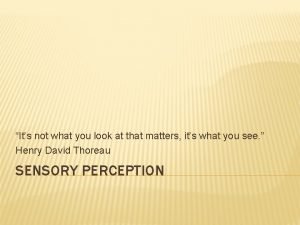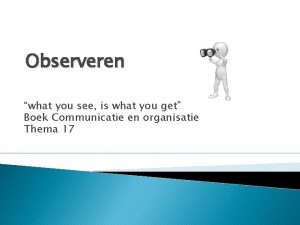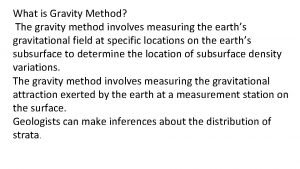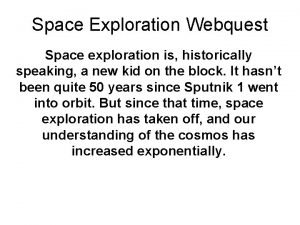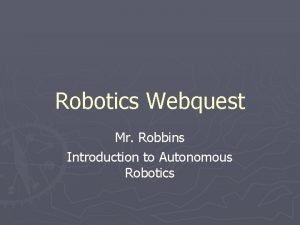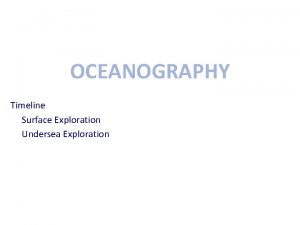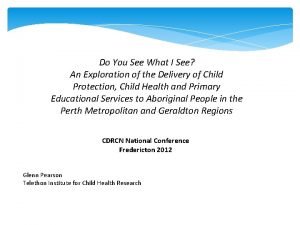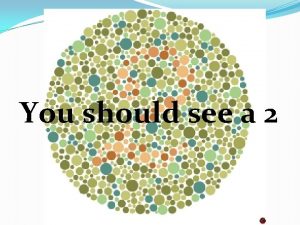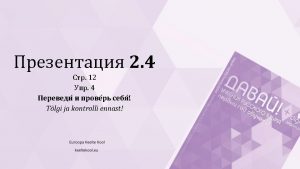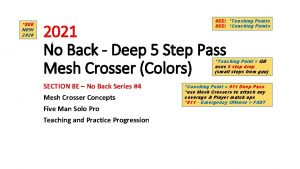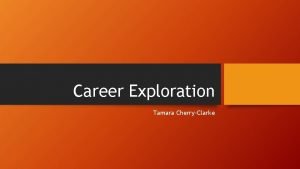Do You See What I See An Exploration














- Slides: 14

Do You See What I See? An Exploration of the Delivery of Child Protection, Child Health and Primary Educational Services to Aboriginal People in the Perth Metropolitan and Geraldton Regions CDRCN National Conference Fredericton 2012 Glenn Pearson Telethon Institute for Child Health Research

Acknowledgement of Country

Geraldton Perth

Western Australian State Government Aboriginal Affairs Policies (1829 - 2012) SELF EXCLUSION, CULTURAL SELF CONTROL RESPONSIBILITY * PROTECTION ABSORPTION DETERMINATION 2004 AND 1940 s 1970 s SEGREGATION PRE 1905 SELF ASSIMILATION INTEGRATION MANAGEMENT AND CONTROL 1960 s 1980 -90 s 1905 * Current Australian Government Policy

Research Focus National State Local Education, Health, Child Protection Wadjella Perceptions experiences, attitudes, values Aboriginal

Research Governance Critical Thinkers Group State Government Interagency Group Steering Group 20 Community Research Partners Geraldton 10 20 Rockingham 12 Fremantle 12 Midland Joondalup

Study One Findings Themes that have been Aboriginal Responses identified. Living in a dominate culture Life experiences of growing up outside the mainstream, feeling different and being treated differently, generational change, there are common experiences but there are distinctly individual experiences that have shaped the person. Perceptions of self Attitudes Beliefs Values Experiences - Influences Very much an us and them framing of these, strong commonality on a range of issues Perceptions of Other Appear to be very aware of the other, is compelled to (Othering) engage on a daily basis to get needs met, treat them as Aboriginal’s not people, racist, controlling, Wadjella Responses Life experiences of growing up within the mainstream, predominately unaware of own culture as a distinct entity but living under the values of this culture e. g. work ethic, getting on with it, limited experience with and of knowledge of Aboriginal people and history, Attitudes Beliefs Values Experiences - Influences Diverse set of responses with some commonality, especially as government workers Appear to be aware of the other but not confident of this, don’t understand why infighting and feuding, violence, poor choices, scared about being called a racist/racism, Broad range of issues; service models, time, pressure, managing risk, limited resources, staff turnover, policies that don’t work, programs that don’t work, issues that affect Aboriginal families, outside their role/function or too big for them. Broad range of issues: capacity of client, complexity of issues that present in these families, Study One Findings Factors that Affect Service Delivery/Provision Broad range of issues: inappropriate service models, disconnected from Aboriginal community, not the right type of staff, feel they dehumanise them, communication is problematic, Factors that Affect Service Receiving Solutions to Increase Service Delivery/Receiving Capacity Broad range of issues: not knowing about what was available, history with government, Education, training, employment of Aboriginal people, Education in schools, training in University and on the job, employment of Aboriginal people,

Wadjella Worldview Community Government Department Workplace Role Self

Aboriginal Worldview Broader Community Aboriginal Community Family Self

Study Two Findings Themes that have been identified. Relationships Knowledge of Aboriginal history and culture Personal Experience, Attitudes and Values Perception of the other – responses to a person’s Aboriginality Aboriginal Responses Wadjella Responses Types of Relationships/Characteristics of relationships Process for establishing relationships with Aboriginal clients Client Related Factors that influenced establishing and maintaining relationships Level of knowledge and experience of Aboriginal history and culture Understanding of culture and its functions in society Understanding of Australian Culture Types of Relationships/Characteristics of relationships Process for establishing relationships with Aboriginal clients Worker Related Factors that influenced establishing and maintaining relationships Level of Knowledge and experience of Aboriginal history and culture Understanding of culture and its functions in society Understanding of Australian Culture Personal opinions and philosophies clearly influence client behaviour Broad reaction to the provision of targeted or specific services or programs for Aboriginal people Family has been significant in influencing participant attitudes towards Aboriginal people Highly contested space Process of identifying or confirming if someone is Aboriginal Awareness of images and stereotypes of Aboriginal people Language used to describe Aboriginal people Knowing that the other person was Aboriginal influenced the way that they interacted with that person Some felt that too much was made of a person’s Aboriginality. worker practice Broad reaction to the provision of targeted or specific services or programs for Aboriginal people Family has been significant in influencing participant attitudes towards Aboriginal people Highly contested space Process of identifying or confirming if someone is Aboriginal Images and stereotypes of Aboriginal people Language used to describe Aboriginal people Most stated that it did not influence or change the way that they interacted with Aboriginal people – but clearly it does. Some felt that too much was made of a person’s Aboriginality. Study Two Findings Personal opinions and philosophies clearly influence

Study Two Findings Themes that have been identified. Aboriginal Responses Perceptions of the other – Aboriginal Principle – Treat Everybody As You Want To Be Being a Government Treated worker Perceptions of the other - Fear of being called a racist - Racism There wasn’t a clear definition of what racism or being racist is across the responses given Racism is an everyday part of Aboriginal life commencing early in their lives Wadjella Responses Public Servant Principle – Treating Everybody the Same There wasn’t a clear definition of what racism or being racist is across the responses given Impact of being racially abused by client Feelings of white guilt Broad reaction to two sets of rules Factors that Affect Service Worker capacity and willingness (compliance and resistance) Worker capacity and willingness (compliance and Delivery/Provision and Client capacity and willingness (compliance and resistance) Service Receiving Client capacity and willingness (compliance and resistance) Self protective behaviour of worker Successful examples Responses were varied with few clear examples Service Features – employing the right person for the job, Service Features – outreach services, Aboriginal staff are able to work blackfella Characteristics of Worker way, programs that provide practical skills to families, Cross cultural training culturally safe services, capacity of worker to respond to Examples of specific programs or approaches – Sport, clients needs Art , Signs of Safety Examples of specific programs or approaches – sport, music, consumer advocacy, two laws approach to justice

Five Major Findings The colonising project to assimilate Aboriginal people into the mainstream Australian culture is still ongoing, Aboriginal people lives are evidence of and Workers are witnesses to the effect of current and past government policies relating to Aboriginal people, The Five Big Ticket Items (Findings) As Aboriginal people are bound within a dominate culture Workers are also bound within the government systems that require both to be compliant, The space of engagement between Aboriginal and Wadjellas is highly contested, highly political and is made more complex with a limited understanding the meaning of culture and racism and prejudice and, The individuals personal philosophies and opinions drive their practice as a Worker and behaviour as a Client.

Acknowledgements

Contact Details Mr Glenn Pearson Chief Investigator – Centre of Research Excellence into Aboriginal Health and Wellbeing Web: http: //aboriginal. childhealthresearch. org. au/centre -for-research-excellence-(cre). aspx Email: glennp@ichr. uwa. edu. au
 It's not what you look at that matters, it's what you see.
It's not what you look at that matters, it's what you see. If you could see the future what would you do
If you could see the future what would you do Good morning nice to see you
Good morning nice to see you Good evening students
Good evening students Vrije observatie
Vrije observatie You say that you love rain
You say that you love rain Agree or disagree questions about life
Agree or disagree questions about life If you think you can you can poem
If you think you can you can poem Tell me what you eat and i shall tell you what you are
Tell me what you eat and i shall tell you what you are I will follow you follow you wherever you go
I will follow you follow you wherever you go Latitude correction gravity formula
Latitude correction gravity formula What factors encouraged european exploration
What factors encouraged european exploration Space exploration webquest
Space exploration webquest Space merit badge
Space merit badge Where and how are robotics used for scientific exploration?
Where and how are robotics used for scientific exploration?
